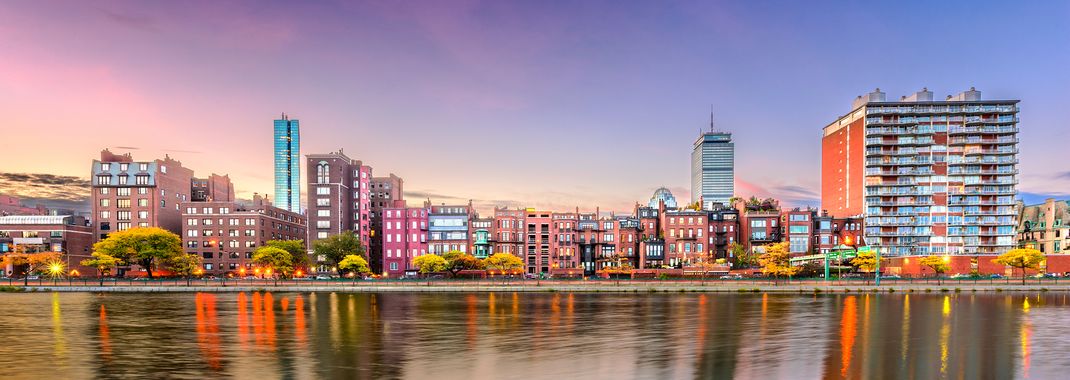
In September, MassBio released its annual Industry Snapshot examining the life sciences industry in Massachusetts throughout all of 2018 and the first two quarters of 2019. To get a better idea of the results and what they mean for the future of the industry, we sat down with MassBio’s VP of Programs & Global Affairs, Elizabeth Steele.
How has employment in the biotech industry grown in recent years and do you predict this trend will continue?
In the last decade, the Massachusetts biopharma industry grew by 35%, adding close to 20,000 jobs. This includes 4,300 jobs that were added from 2017 to 2018, an increase of 6.4% and the highest year-over-year employment growth in over 10 years. If we dissect those numbers further, we noticed incredible growth of the biotech research & development sector. R&D jobs grew by 50% in the last decade, highlighting the pace of innovation and the overall capacity of the industry to bring new, breakthrough treatments to patients around the world.
However, continued growth is threatened by our state’s aging transportation system and lack of affordable housing. Traffic congestion has reached unprecedented levels and the MBTA is in a state of disrepair. To ensure Massachusetts remains the best place in the world for the life sciences well into the future, we must take action now to not only fix what’s broken, but to also create the transportation system we need for the next twenty years. That’s why MassBio is part of the Massachusetts Business Coalition for Transportation, joining business and community associations across the state to develop lasting solutions. We also recently surveyed our membership to gauge the current state of transportation in an effort to target the biggest pain points and how they are affecting the life sciences. Those results will be released in late-September.
MassBioEd predicts that by 2023 there will be 12,000 additional jobs that need to be filled. How do the findings of this snapshot align with that data? What is being done to ensure we have a robust pipeline of talent?
The expected growth from that MassBioEd data looks at a timeline from May 2017 to May 2023, which would average about 2,000 jobs per year. But, we now have data through 2018 which shows we added 5,700 new jobs in a time period where it was expected that 3,000 jobs would be created – if growth was linear. Therefore, by comparing the data we see in the 2019 Industry Snapshot to the data from MassBioEd, we can see that Massachusetts is already outpacing the estimated growth. This is an excellent sign, but a reminder that we must do more to fill the talent pipeline.
Talent remains Massachusetts’ greatest natural resource. Yet, with tens of thousands of jobs to be filled in the coming years, we need to look everywhere to ensure the best and brightest have access to our industry. That is why MassBio was a founding member of Project Onramp – an internship program that connects first-generation and/or low-income college students to the biotech industry. The first class of 52 students were placed in well-paid internships in 30 life sciences companies, and the program is set to continue through 2020 and beyond.
Did you notice a shift in the venture capital landscape for 2019?
Investment in biopharma reached an all-time high in 2018, with $4.8 billion of venture capital investment in Massachusetts biopharma companies. When looking at the first two quarters of 2019, Massachusetts biopharma companies raised just under $1.5 billion – a dip from the first half of 2018 but still in line with past years and an impressive amount overall. Of those investment dollars, Cambridge-based biotech companies received 63% of all biotech VC investment to the state in 2018.
Cambridge and Boston are home to some of the most renowned universities, hospitals, and biopharma companies in the world, but we’re actively working to spread the success of this industry throughout the Commonwealth. Mini clusters are beginning to sprout across Greater Boston and out to Worcester and beyond. We’re hopeful that in next year’s snapshot we’ll see VC funding invested in companies throughout the state.
In what ways do patients benefit from Massachusetts thriving life sciences cluster?
Massachusetts-headquartered companies have developed therapies that treat patient populations of up to 265 million patients in the United States, and 2 billion patients around the world. For sick people, Massachusetts represents the greatest hope for new tomorrows.
And based on the data, the impact to patients of drugs developed in Massachusetts is only going to grow. Massachusetts is home to four of the top five NIH-funded independent hospitals and receives 56% of all NIH funding to independent hospitals. On top of that, 18 of the top 20 biopharma companies in the world have a physical presence in the state. As a result, much of the R&D of cutting-edge, new therapies is happening right here, with many nearing approval. Massachusetts headquartered companies currently have 37 drug candidates pending FDA approval, and 2,253 in the pipeline. This represents 14% of the U.S. pipeline for new therapies – all from one state. Massachusetts truly is the State of Possible.
To learn more about the state of the industry in Massachusetts, download the 2019 Industry Snapshot report.